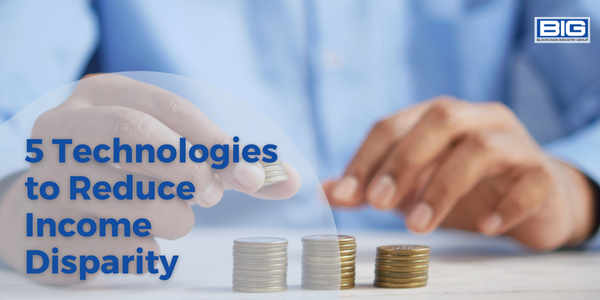
There are a variety of technologies that have the potential to contribute to reducing income disparity and increasing economic opportunities for individuals and communities around the world. These technologies can include those that enhance access to education and training, improve the efficiency and productivity of agriculture, enable the transition to renewable energy sources, improve access to healthcare, and enable access to the internet and other digital tools. By leveraging these technologies, we can help to increase the skills and knowledge of individuals, improve the economic opportunities of communities, and increase the overall prosperity and well-being of people around the world. Overall, the adoption of these technologies has the potential to drive positive change and drive progress towards a more equitable and prosperous world.
Education Technology
Education technology refers to technology that enhances access to education and training, such as online learning platforms and educational software. This technology can help to increase the skills and knowledge of individuals, increasing their employability and earning potential.
For example, online learning platforms can provide access to a wide range of educational resources, including lectures, course materials, and assessments, enabling individuals to learn at their own pace and from anywhere. Educational software can be used to provide interactive and engaging learning experiences, helping students to better understand and retain information.
Overall, education technology has the potential to increase access to education and training, particularly for individuals in underserved or disadvantaged communities. By providing more opportunities to learn and gain skills, education technology can help to increase the employability and earning potential of individuals, reducing income disparity and driving economic development.
Agricultural Technology
Agricultural technology refers to technology that improves the efficiency and productivity of agriculture, such as precision farming techniques and irrigation systems. This technology can help to increase the income of small farmers and rural communities, particularly in developing countries.
For example, precision farming techniques, such as the use of sensors and GPS, can help farmers to optimize the use of resources, such as water and fertilizers, increasing crop yields and reducing costs. Irrigation systems can help to increase the efficiency and effectiveness of watering crops, improving crop yields and reducing the risk of crop failure.
Overall, agricultural technology has the potential to significantly improve the efficiency and productivity of agriculture, particularly in developing countries where small farmers often struggle to compete with larger, more mechanized operations. By increasing the income of small farmers and rural communities, agricultural technology can help to reduce income disparity and drive economic development.
Renewable Energy Technology
Renewable energy technology refers to technology that enables the transition to renewable energy sources, such as solar panels and wind turbines. This technology can help to reduce energy costs and increase economic opportunities for communities, particularly in developing countries.
For example, solar panels can be used to generate electricity from sunlight, providing a clean and renewable energy source. Wind turbines can be used to generate electricity from wind, providing a clean and renewable energy source.
Overall, renewable energy technology has the potential to significantly reduce energy costs and increase economic opportunities for communities, particularly in developing countries where access to electricity is often limited. By providing a clean and renewable energy source, renewable energy technology can help to reduce dependence on fossil fuels, improving environmental sustainability and driving economic development.
Healthcare Technology
Healthcare technology refers to technology that improves access to healthcare, such as telemedicine and remote monitoring systems. This technology can help to reduce healthcare costs and improve health outcomes, particularly in underserved communities.
For example, telemedicine can be used to provide remote consultations with healthcare professionals, enabling individuals to access healthcare services without having to travel to a healthcare facility. Remote monitoring systems can be used to monitor the health of individuals remotely, enabling healthcare professionals to identify potential health risks or issues before they become more serious.
Overall, healthcare technology has the potential to significantly improve access to healthcare, particularly in underserved or disadvantaged communities. By providing more convenient and cost-effective access to healthcare services, healthcare technology can help to improve health outcomes and reduce healthcare costs, driving economic development and improving overall well-being.
Digital Inclusion Technology
Digital inclusion technology refers to technology that enables access to the internet and other digital tools, such as low-cost computers and mobile phones. This technology can help to increase the economic opportunities of individuals and communities, particularly in developing countries.
14 Popular Low-Code, No-Code Tools and Platforms
—
20 Low Code/No Code Technology Use Cases
—
48 Innovative Low-Code, No-Code Companies
For example, low-cost computers and mobile phones can provide access to a wide range of digital tools and resources, enabling individuals to connect with others, access information, and participate in the digital economy.
Overall, digital inclusion technology has the potential to significantly increase the economic opportunities of individuals and communities, particularly in developing countries where access to the internet and other digital tools is often limited. By providing more convenient and cost-effective access to the internet and other digital tools, digital inclusion technology can help to drive economic development and improve overall well-being.



